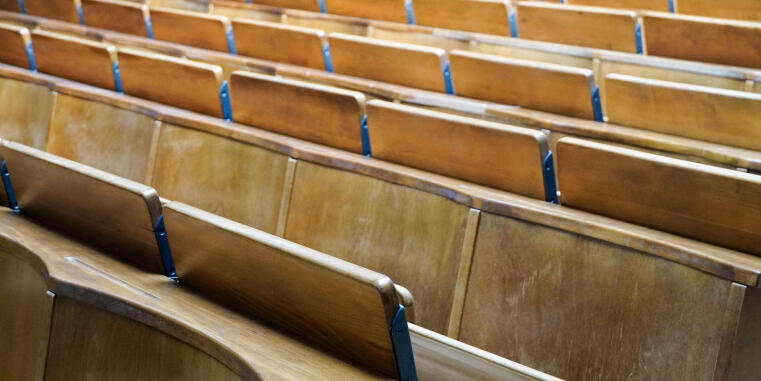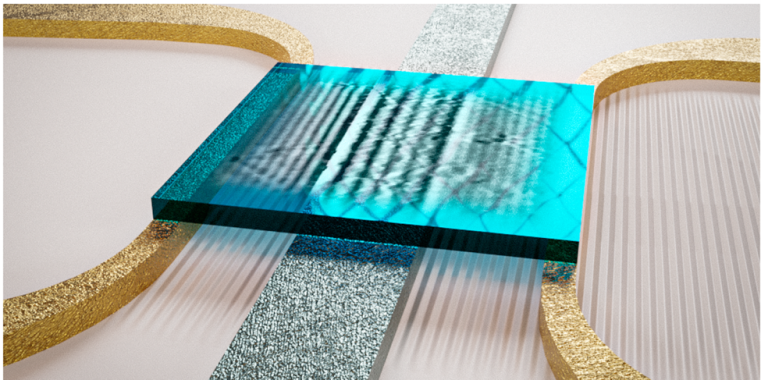

Allgemeines Physikalisches Kolloquium
im WS 2023/24
Donnerstag, 16 Uhr c.t. Ort: HS 2, IG 1, Wilhelm-Klemm-Str. 10, 48149 Münster
09.11.2023 Prof. Michel Janssen
Reflections on Oppenheimer, the man and the movie
Christopher Nolan's movie Oppenheimer raises a number of interesting questions about the life and times of its main subject and offers a range of answers for viewers to choose from. Why was Oppenheimer in favor of dropping atomic bombs on Hiroshima and Nagasaki? Why did he not become a spokesperson for those among his fellow physicists opposed to their military use? And why then was he adamantly opposed a few years later to the development of the hydrogen bomb? What about his communist sympathies? How could the same derogatory information that was well known when he was cleared to become the head of the General Advisory Committee to the Atomic Energy Commission in 1947 be used so effectively to revoke his security clearance in 1954? Like Martin Sherwin and Kai Bird, the authors of the book on which the movie is based, I will deal with these questions as they come up as Oppenheimer's life and career unfolds, from US ambassador of quantum mechanics in Berkeley to scientific leader of the Manhattan project in Los Alamos to Einstein's boss at the Institute of Advanced Studies in Princeton and prominent adviser to the Truman administration on matters concerning nuclear physics and national security to his fall from grace under Eisenhower and his eventual partial rehabilitation by Kennedy and Johnson. I will highlight the roles of those individuals in Oppenheimer's life who play a major role in the movie, especially his nemesis, Lewis Strauss.
16.11.2023 Dr. Dima Afanasiev
Light-driven ultrafast magnetism
For centuries, the central goal of condensed matter physics has been to understand and describe naturally occurring phenomena, both in macroscopic and microscopic terms. Over the past few decades, a new paradigm has emerged: to experimentally realize and control new states of matter that are not found in nature. In addition to answering fundamental scientific questions, the control and knowledge of potential 'exotic' phases also hold the promise of creating a new and radically different generation of functional devices.Ultrashort pulses of light are particularly appealing in this context as they allow us to create strongly nonequilibrium transient states of matter with properties that are often not even attainable in equilibrium. Some examples include light-induced superconductivity, metal-to-insulator transitions, and light-driven Floquet engineering. In this discussion, I will explore how light can be used to control magnetism, encompassing fundamental magnetic interactions, magnetic phase transitions, and highly nonlocal spin dynamics. I will particularly focus on nonthermal methods for controlling magnetism when the photon energy of light is precisely tuned in resonance with elementary excitations, such as lattice vibrations, orbitals, or electron excitations, which have a direct impact on the ordered spins.
23.11.2023 Dr. Otakar Frank
(Nano)spectroscopic signatures of intricate relations between 2D layers and their substrate
Common spectroscopic investigation of two-dimensional materials and their van der Waals (vdW) heterostructures mostly relies either on diffraction-limited microRaman or photoluminescence (PL). However, these methods do not properly capture local variations caused by, e.g., nanometre-sized heterogeneities stemming from contamination trapped between the layers or complex strain and charge patterns formed by strong out-of-plane interactions.Tip-enhanced spectroscopy methods enable the access to information on the local lattice deformation and also on the interaction between the individual layers composing the heterostructure. What may appear as peak splitting in micro-Raman or PL spectra of transition metal dichalcogenides (TMDC) on metal substrates or of vdW heterobilayers, can, in fact, often come from mixing up signals from various regions within the laser spot, including new or discretely shifted peaks. In other cases, however, peak splitting can indicate lifting the degeneracy of the phonon, due to, for example, uniaxial deformation. Spectroscopic fingerprints, both on micro- and nanoscale, of variously interacting vdW layers will be discussed, including TMDCs on metals [1-3] and TMDC heterobilayers [4-6].References:[1] Vilecký et al., Phys. Chem Lett. 11, 6112 (2020)[2] Vilecký et al., Adv. Mater. Interfaces 7, 2001324 (2020)[3] Rodriguez et al., Phys. Rev. B 105, 195413 (2022)[4] Rodriguez et al., 2D Mater. 8, 025028 (2021)[5] Rodriguez et al., J. Phys. Chem. Lett. 13, 5854 (2022)[6] Rodriguez et al., ACS Nano 17, 7787 (2023)
30.11.2023 Prof. Eva Blasco / Prof. Martin van Hecke
Bitte beachten: Dieses besondere Kolloquium wird vom CRC Intelligent Matter organisiert, deshalb findet es zu ungewohnter Zeit ( 15 Uhr s.t.) und an einem unüblichen Ort (Center for Soft Nano Science SON) statt.
Link zur Vortragsankündigung auf der Webside des CRC 1459 Intelligent Matter
Prof. Eva Blasco "Designing Intelligent Materials for 4D (Micro)Printing"
Prof. Martin Van Hecke "Emergent Computing in Mechanical Metamaterials"
07.12.2023 Prof. Sven-Olaf Moch
The proton structure in the LHC era
We review the status and precision of parton distribution functions (PDFs), the strong coupling and the heavy quark masses in global fits to next-to-next-to-leading order (NNLO) in QCD.
We discuss the impact of data from the LHC as well as the combined data from for inclusive deep-inelastic scattering.
We illustrate how the precision of available experimental data challenges current theoretical predictions and we outline areas for future improvements.
14.12.2023 Prof. D. Wegner
Quantum simulator to emulate lower dimensional molecular structure
Designing materials with tailored physical and chemical properties requires a quantitative understanding of interacting quantum systems. In order to provide predictability, a promising route is to create bottom-up platforms, where the electronic properties of individual and interacting atoms can be emulated in a tunable manner. Here, we present a solid state quantum simulator based solely on patterned Cs atoms on the surface of semiconducting InSb(110). We use this platform to locally bind electrons in traps that emulate artificial atoms, by precisely positioning Cs atoms with the tip of a scanning tunneling microscope (STM). The bound localized states are probed and mapped via scanning tunneling spectroscopy (STS). These artificial atoms serve as building blocks to realize artificial molecular structures with different orbital symmetries. We find bonding and anti-bonding states for coupled dimers of artificial atoms and orbitals of higher symmetries (π orbitals) for a linear assembly of a few artificial atoms. Based on these artificial orbitals and various atomic patterns, we emulate the structure and orbital landscape of well-known planar organic molecules, including antiaromatic molecules. Presented results validate this new quantum simulator platform and prove its high tunability. I will provide an outlook toward a many-body quantum simulator.
11.01.2024 Prof. Yvonne Wong
Neutrinos in cosmology: A match made in the heavens
The standard hot Big Bang model predicts a background of neutrinos permeating all space. At an average of 330 neutrino per cubic centimetre, the relic neutrinos are the most abundant known particles in the universe. However, unlike its better-known cousin, the cosmic microwave background, the direct detection of this relic neutrino background has so far eluded us. Nonetheless, because of the sheer enormity of their collective gravitational forces, these relic neutrinos have a strong impact one the many phases of the universe’s evolution. In this talk I will discuss some of the ways in which neutrinos influence the evolution of the universe on the largest scales, and how we can use this understanding in combination with cosmological observations to learn about neutrino physics in the early universe.
18.01.2024 Prof. Ralph Engel
Surprises in High-energy Astroparticle Physics
The Universe sends us particles to Earth that cover a very wide range in energy, extending up to 10,000,000 times the energy of the most powerful man-made accelerators. These particles and the secondary particles (gamma-rays and neutrinos) produced in their interactions, are messengers of the most extreme environments and violent processes in the Universe. Combining our observations of the different particle types, typically referred to as multi-messenger astrophysics, has led to a number of unexpected discoveries and has changed our understanding of the corresponding high-energy processes in astrophysics fundamentally. After giving an introduction to the fundamental relation between cosmic rays, neutrinos, and gamma rays, the iterative and non-predictable process of developing hypotheses and testing them with observations is illustrated by focusing on the relation between cosmic rays and neutrinos.
25.01.2024 Prof. Hendrik Bentmann
TERMIN ENTFÄLLT!
Tracing topological states in 2D and 3D quantum materials
Similar to knots in a rope, the electron wave functions in a crystal can be characterized by mathematical tools of topology. The classification of electronic phases of matter via topological invariants now complements the established paradigm of spontaneously broken symmetries. In this colloquium, I will present our efforts to uncover novel topological phases based on angle-resolved photoelectron spectroscopy (ARPES). The first part of the talk will focus on the combination of electronic topology and magnetism in the van der Waals (vdW) magnet MnBi2Te4. I will concentrate, especially, on the two-dimensional (2D) limit of a single MnBi2Te4 vdW layer, interfaced with a non-magnetic topological insulator, Bi2Te3. In the second part of the presentation, I will discuss how dichroism in ARPES can enable direct imaging of wave-function topology, focusing on nodal points and lines in the band structure of topological semimetals.
01.02.2024 Prof. Toeno Van der Sar
Magnetic imaging of spin waves interacting with normal and superconducting metals
Spin waves are collective excitations of the spins in magnetic materials. They play an important role in the thermodynamics of magnets and are promising as signal carriers in classical and quantum information devices. In this talk, I will first introduce spin-wave imaging based on electronic sensor spins in diamond1,2 – a magnetic resonance technique that enables studying spin waves underneath optically opaque materials3. I will then describe experiments on the interaction of spin waves with normal and superconducting metals4. For normal metals, Ohmic dissipation dominates the diamagnetic response to the stray magnetic fields of the spin waves, leading to spin-wave damping. In contrast, the dissipationless diamagnetism of superconductors renormalizes the spin-wave dispersion, resulting in spin-wave refraction that is tunable by electric currents, magnetic fields, and temperature. The results indicate that superconductors provide opportunities for realizing tunable, low-damping spin-wave optical devices that could be used for microwave-control in classical or quantum circuits.
Imaging spin waves underneath a superconducting control electrode using spins in diamond© M. Borst - Casola, F., Van der Sar, T. & Yacoby, A.
Probing condensed matter physics with magnetometry based on nitrogen-vacancy centres in diamond
Nat. Rev. Mater. 3, 17088 (2018) - Bertelli, I. et al.
Magnetic resonance imaging of spin-wave transport and interference in a magnetic insulator
Sci. Adv. 6, Issue 46, eabd3556 (2020) - Bertelli, I. et al.
Imaging Spin-Wave Damping Underneath Metals Using Electron Spins in Diamond
Adv. Quantum Technol. 4, 2100094 (2021) - Borst, M. et al.
Observation and control of hybrid spin-wave - Meissner-current transport modes
Science 382, 430-434 (2023)
- Casola, F., Van der Sar, T. & Yacoby, A.
